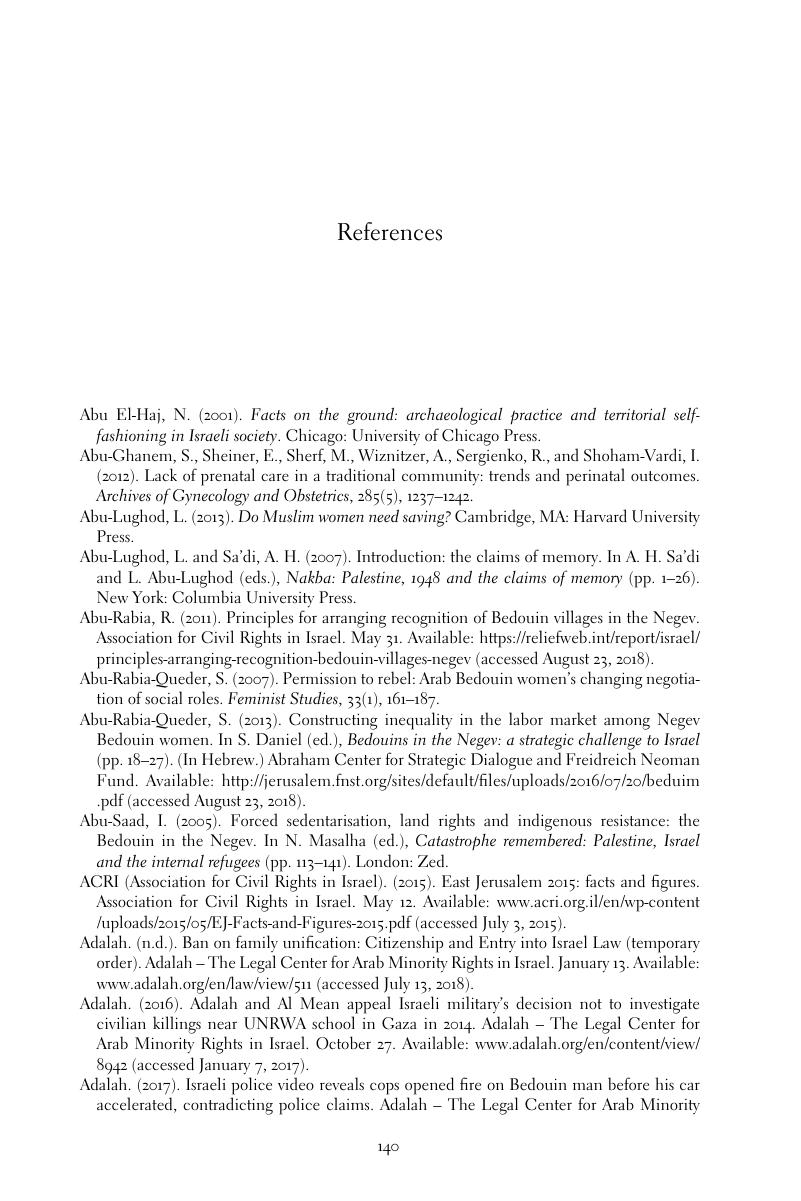Book contents
- Incarcerated Childhood and the Politics of Unchilding
- Incarcerated Childhood and the Politics of Unchilding
- Copyright page
- Dedication
- Contents
- Preface
- Acknowledgments
- 1 Childhood as Political Capital
- 2 Caging: From Lydda, 1948, to Hebron, 2018
- 3 “Our Existence Is Upsetting Them”: Gendered Violence and Unchilding in the Naqab
- 4 “They Made My Parents into Prison Guards”: Childhood, Parenthood, and the Carceral Politics of Home Arrest
- 5 Unbreakable: The Intimacy of Torture and the Children of Gaza
- 6 Children as Political Capital: Unchilding and the Incomplete Death
- References
- Index
- References
References
Published online by Cambridge University Press: 30 August 2019
- Incarcerated Childhood and the Politics of Unchilding
- Incarcerated Childhood and the Politics of Unchilding
- Copyright page
- Dedication
- Contents
- Preface
- Acknowledgments
- 1 Childhood as Political Capital
- 2 Caging: From Lydda, 1948, to Hebron, 2018
- 3 “Our Existence Is Upsetting Them”: Gendered Violence and Unchilding in the Naqab
- 4 “They Made My Parents into Prison Guards”: Childhood, Parenthood, and the Carceral Politics of Home Arrest
- 5 Unbreakable: The Intimacy of Torture and the Children of Gaza
- 6 Children as Political Capital: Unchilding and the Incomplete Death
- References
- Index
- References
Summary

- Type
- Chapter
- Information
- Incarcerated Childhood and the Politics of Unchilding , pp. 140 - 157Publisher: Cambridge University PressPrint publication year: 2019



